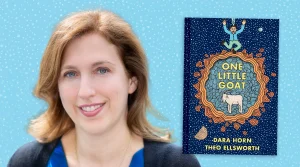 TORONTO — Abe Glowinsky, left, chair of Beth Sholom Synagogue’s minyan committee.
TORONTO — Abe Glowinsky, left, chair of Beth Sholom Synagogue’s minyan committee.
For those who are saying Kaddish – the prayer that mourners recite at twice-daily services for 11 months following the loss of a parent – Beth Sholom’s new minyan incentive program called “Prayer-O-Plan” was implemented recently to increase the chances of having a minyan at the end of the day.
Kaddish is recited only in the presence of a minyan – the traditional prayer quorum of 10 men (or 10 men and women in egalitarian congregations).
Beth Sholom’s traditional Conservative services are non-egalitarian. Women make up about 15 per cent of the worshippers at weekday minyans, and can use the incentive plan too.
A former three-day-a-year shul-goer, Glowinsky began saying Kaddish after his mother died in December 2008, never imagining the impact it would have on him. He still attends minyan “pretty much every morning, and a chunk of evenings.”
He said he is committed to being there to help make sure that mourners don’t have to leave without saying Kaddish.
Glowinsky was instrumental in forming the shul’s minyan committee, lobbying board members to commit to attending one evening service a month, among other efforts. Prayer-O-Plan was the result of a minyan committee brainstorming session.
“We tried numerous things,” Glowinsky told The CJN.
To encourage attendance, he said, the shul has instituted a monthly “Minyan night at the movies,” with dinner and a Jewish-themed film following services at a cost of $10. “We’ve had some pretty good turnouts.”
Larry Shilling – the shul’s chazzan sheini, who runs the daily minyan and the Prayer-O-Plan program – said that Beth Sholom has between 18 and 25 worshippers on an average morning, but that it can be difficult to get a minyan later in the day.
When there are not enough people, he said, “We tell them we’re really sorry, and try to send them elsewhere.”
As well, he said, the synagogue, which has almost 1,000 member families, sends reminder letters to people who will be saying Kaddish for the yahrzeit of a loved one, and invites them to light a yahrzeit candle at the service on the first evening of the yahrzeit day.
Before this year’s High Holidays, Beth Sholom members received cards for the new incentive plan in the mail, along with a letter from Cantor Eric Moses and Rabbi Aaron Flanzraich introducing the program.
Adult members whose card is stamped 12 times receive a free High Holiday ticket, to a maximum of two per household. The shul charges between $125 and $250 per reserved seat, depending on its location. As well, once 50 cards are completed, they will be entered in a draw for two air tickets to Israel.
Glowinsky said that many congregations face similar challenges.
At nearby Beth Tzedec Congregation, which has 2,700 member families, ritual director Lorne Hanick said things are fine, with rare exceptions. “Generally it’s not a problem because of our central location, and there are a lot of people saying Kaddish.”
As well, he added, there are Jewish men who work in the building or who live nearby who can be called on if necessary. At this time of year, when afternoon services are early and people are away for the winter, he encourages members to bring family and friends to the minyan.
“Sometimes we wait five or 10 minutes,” Hanick said. He added that it can be embarrassing for women who are not counted, if they raise the number of worshippers to 10. Some women have commented to that effect, he noted.
Another factor at afternoon services is that people who work downtown can attend early Minchah minyanim in office buildings.
Beth Tikvah Synagogue, also a non-egalitarian Conservative congregation, is holding its own, according to ritual director Irv Kirshenblat. “During weekdays, we are probably averaging 15 males and approximately five to six females, both morning and afternoon.”
Because of its location – “not [in] a central Jewish area” as well as on a high-traffic main street – Beth Tikvah also faces challenges getting a minyan on occasion.
Recently, a member of the band Safam, who was performing at the shul that night, stepped in to complete the minyan. Kirshenblat was away at the time.
At Beth Sholom, Prayer-O-Plan seems to be working, said Glowinsky. “We have a number of people who’ve had eight stamps, and I think we have four or five completed.”
However, he added ruefully, “I can’t tell you how many people never even saw it.” Instead, he said, many people took their High Holiday tickets out of the envelope, but paid no attention to other items in the same package. “We just recently told people they can come in and get the card if they have lost or misplaced it.”
Rabbi Flanzraich told The CJN he likes the message of Prayer-O-Plan, linking minyan attendance with other mitzvot.






